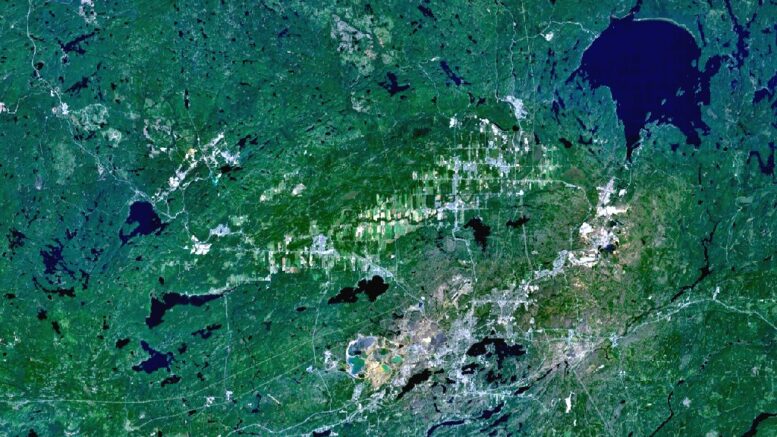With over 190 confirmed impact craters having hit Earth, there are a plethora of interesting discoveries! A good example of this being that scientists can roughly determine the age of an impact based upon the size of the crater. Impact craters less than ten thousand years old typically have a diameter of around 330 feet. Almost all craters between 10,000 and 1 million year in age are less than 2.4 miles in diameter. For craters ages between 1 and 10 million years ago, they have a diameter of 3 miles or more. Craters with diameter 12 miles or more are all older than 10 million years ago. Knowing this, looking at the 5 largest impact craters will probably be some of the oldest in North America!
Sudbury
Currently a major geological structure in Ontario, Canada, the Sudbury crater was formed 1.849 billion years ago in the Paleoproterozoic era. The site is in the Canadian Shield, located in the city of Greater Sudbury, Ontario. The city erected a plaque commemorating the impact. A fun fact about this impact crater site is that NASA used it to train the Apollo 15, 16, and 17 astronauts in recognizing rocks formed as the result of a very large impact.
Chicxulub
Chicxulub is an impact crater buried underneath the Yucatán Peninsula in Mexico that was formed slightly over 66 million years ago. The crater is a result of an impact with an asteroid of about 6 miles in diameter, with the crater being estimated to be 110 miles in diameter and 12 miles in depth. It is the only impact crater whose peak ring is intact and directly accessible for scientific research. It is now widely accepted that the resulting devastation and climate disruption was the cause of the Cretaceous–Paleogene extinction event, a mass extinction of 75% of plant and animal species on Earth, including all non-avian dinosaurs.
Manicouagan
Currently this is an annular lake in central Quebec, Canada, covering an area of 750 square miles, with the lake island at the center known as René-Levasseur Island. The highest point is Mount Babel. The structure was created roughly 214 million years ago, in the Late Triassic, by the impact of a meteorite 3 miles in diameter. The lake and island are clearly seen from space and are sometimes called the “eye of Quebec.”
Chesapeake Bay
A buried impact crater, the Chesapeake Bay impact crater is located beneath the mouth of Chesapeake Bay, United States. It was formed by a bolide that struck the eastern shore of North America about 35.5 million years ago. Due to its location, it is one of the best-preserved “wet-target” impact craters in the world. Until 1983 there was no evidence of a large impact crater buried beneath the lower part of the Chesapeake Bay and its surrounding peninsulas. In 1993, data from oil exploration revealed the extent of the crater.
Beaverhead
Found in the states of Idaho and Montana, the Beaverhead impact structure is the 2nd largest impact structure within the U.S. It is thought to be 37 miles in diameter, which also makes the crater the 9th larges impact crater on Earth. It has an estimated age of 600 million years and s named for the Beaverhead region of southwestern Montana in which it was first discovered.
For other Top 5 articles like this, check out the articles we have. Connect with us on our social media such as Twitter and Instagram to stay up to date on new articles, events, and more.

Be the first to comment on "Top 5 Largest Impact Craters In North America"